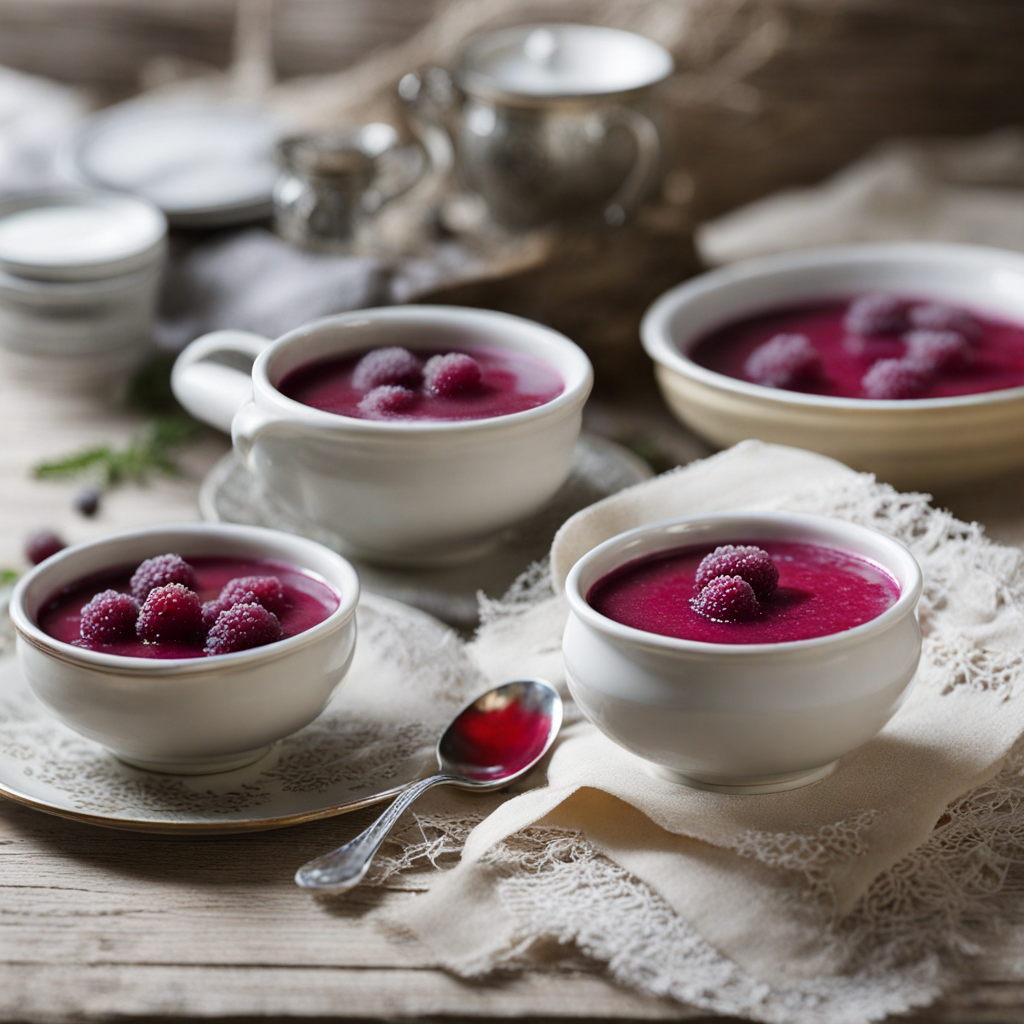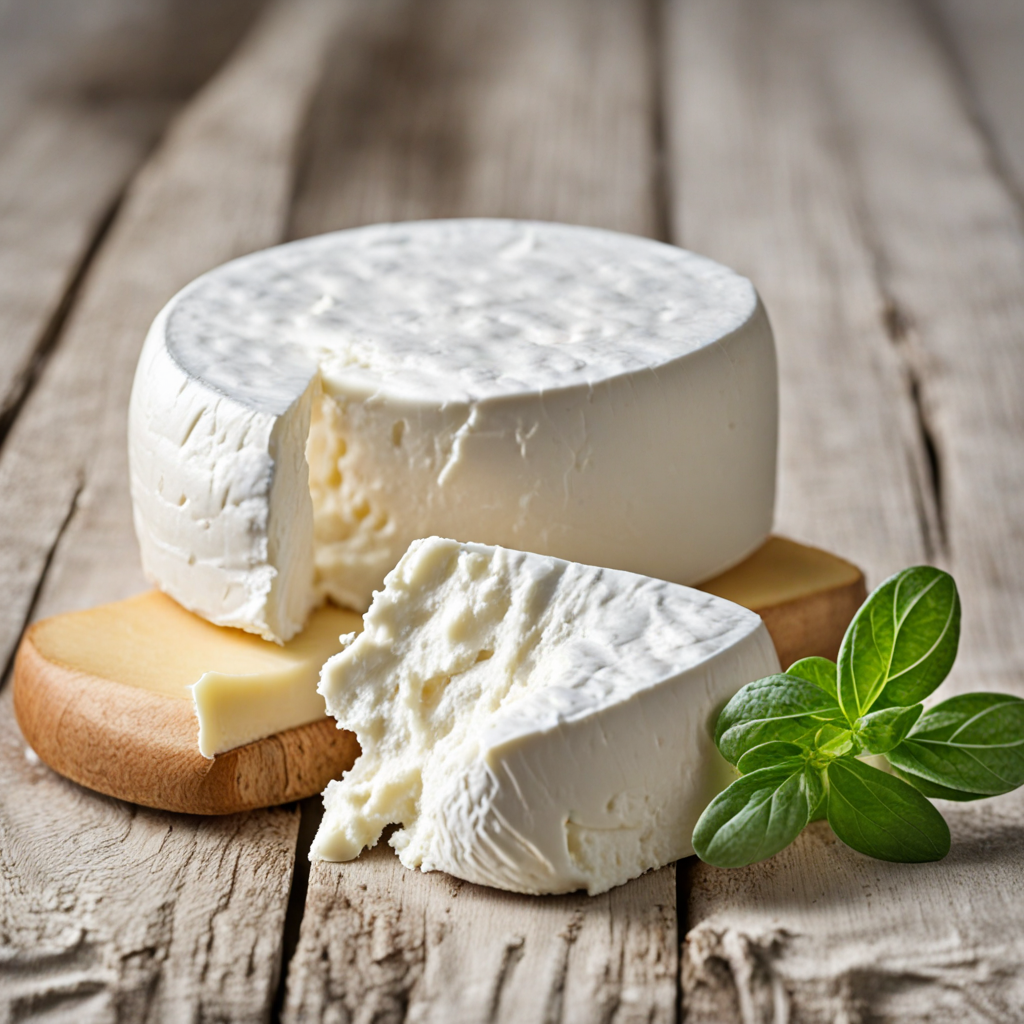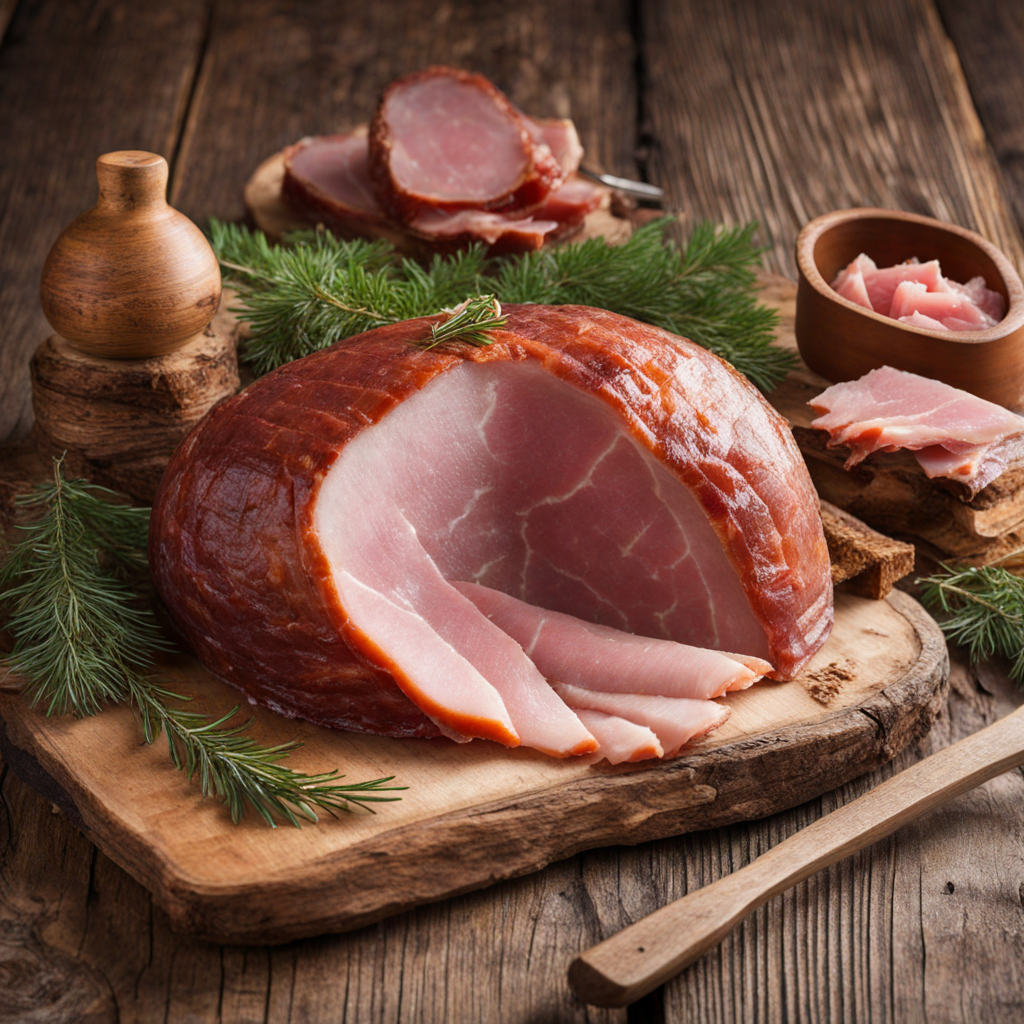Wild Berry Kissel
Wild Berry Kissel is a delightful Estonian dessert that embodies the essence of the country’s lush, natural landscapes. This vibrant dish is made from a variety of wild berries, such as bilberries, lingonberries, and raspberries, which are often foraged from the abundant forests. The berries are cooked down to create a sweet-tart puree, then thickened with a starch, typically potato or cornstarch, to achieve a silky, smooth consistency. The resulting mixture is both refreshing and indulgent, with the berries' natural sweetness balanced by a hint of acidity, making it a perfect treat for any season. Served chilled, Wild Berry Kissel is often enjoyed as a dessert on its own or accompanied by a dollop of whipped cream or a scoop of vanilla ice cream. The beautiful jewel tones of the berry mixture create an inviting presentation that is sure to impress. This dish also highlights the Estonian tradition of using local, seasonal ingredients, showcasing the flavors of the land in a simple yet elegant manner. Each spoonful offers a burst of berry goodness, transporting you to the serene forests of Estonia with every bite. In addition to its delicious taste, Wild Berry Kissel is also versatile and can be enjoyed in various ways. It can be served warm during colder months, providing a comforting and hearty option. Alternatively, it can be poured over pancakes or waffles for a breakfast treat, or even used as a topping for cold desserts like panna cotta or ice cream sundaes. This adaptability, combined with its rich flavor profile, makes Wild Berry Kissel a delightful discovery for anyone eager to explore the unique culinary heritage of Estonia.
How It Became This Dish
Metsamarjakissell: A Sweet Legacy from Estonia Metsamarjakissell, commonly referred to as berry kissel, is a beloved traditional dish in Estonia that exemplifies the rich culinary heritage of the Baltic nation. This sweet, thickened fruit soup has deep roots in Estonian culture, reflecting the country’s connection to its natural landscapes and the changing seasons. Delving into the history of metsamarjakissell reveals not only its delicious flavors but also the cultural significance and evolution of this iconic dessert. #### Origins and Ingredients The origins of metsamarjakissell can be traced back to the agrarian societies of Estonia, where wild berries were plentiful. The name “metsamarjakissell” directly translates to “forest berry kissel,” highlighting the dish’s primary ingredient—forest berries. Berries such as blueberries, lingonberries, cranberries, and raspberries are often used, showcasing the abundance of natural resources in Estonia's lush forests. Historically, the practice of foraging for wild berries has been an integral part of Estonian life. Before the advent of modern agriculture, locals relied on seasonal produce from their immediate environment. As a result, berries became a staple in the Estonian diet, particularly during the summer months when they were harvested. The preparation of metsamarjakissell involved boiling these berries to extract their juices, which were then thickened with a starch, commonly potato or cornstarch, to create a smooth, mellow consistency. #### Cultural Significance Metsamarjakissell is more than just a dessert; it is a cultural artifact that embodies the Estonian ethos of sustainability and respect for nature. The dish is often associated with celebrations and gatherings, as it is served during holidays, family events, and communal feasts. In Estonia, food is not merely a means of sustenance but a way of fostering connections among people. The preparation of metsamarjakissell is often a communal activity, where family members gather to pick berries or aid in the cooking process. This tradition reinforces familial bonds and allows for the transmission of culinary knowledge across generations. In Estonian households, the recipe for metsamarjakissell is often passed down from mothers to daughters, each adding their unique touch to the dish, thus enriching its cultural narrative. Additionally, metsamarjakissell has a place in Estonian folklore. The abundance of berries in the forests is seen as a gift from nature, and dishes made from them are often associated with themes of gratitude and respect for the land. This connection to the earth is especially significant in a country where many people have a strong sense of identity tied to their natural surroundings. #### Development Over Time As Estonia transitioned through various historical epochs—from the influence of the Hanseatic League in the medieval period, through the Swedish and Russian occupations, to independence in the 20th century—the culinary landscape evolved as well. Metsamarjakissell was influenced by these changes, adapting to new ingredients and cooking techniques while retaining its core essence. In the 19th century, the rise of agricultural innovations and the introduction of refined sugar into the Estonian diet allowed for greater experimentation with metsamarjakissell. While traditional recipes relied on the natural sweetness of the berries, the incorporation of sugar began to transform the flavor profile, making the dish more appealing to a broader audience. This period also saw the emergence of various regional variations of metsamarjakissell, with different berries and flavorings reflecting local tastes and available ingredients. The 20th century brought about significant social and political changes that impacted Estonian cuisine. Soviet occupation introduced more standardized food production methods and a focus on efficiency. While traditional dishes like metsamarjakissell remained popular, they were often simplified to accommodate the constraints of a centrally planned economy. Canned fruits and processed ingredients began to replace fresh, foraged berries, leading to a slight shift in flavor and texture. However, the post-independence period of the 1990s saw a resurgence of interest in traditional Estonian foods, including metsamarjakissell. As the nation reconnected with its cultural roots, there was a renewed appreciation for local ingredients and traditional cooking methods. This revival was fueled by the broader global trend toward farm-to-table practices and a growing awareness of the importance of sustainability in cooking. Today, metsamarjakissell is celebrated both in homes and in restaurants across Estonia. Chefs are reimagining this classic dish, presenting it in innovative ways while honoring its traditional roots. Modern interpretations may include unique flavor combinations, such as adding herbs or spices, or incorporating contemporary plating techniques to create a visually stunning dessert that resonates with today’s culinary standards. #### Conclusion Metsamarjakissell stands as a testament to Estonia’s rich culinary heritage, encapsulating the spirit of the land and its people. Through its evolution, the dish has maintained its significance as a symbol of community, sustainability, and cultural identity. Whether enjoyed as a comforting dessert after a hearty meal or featured at festive gatherings, metsamarjakissell continues to evoke nostalgia and pride among Estonians. As contemporary chefs and home cooks alike explore new dimensions of this traditional dish, they are not only preserving a piece of history but also ensuring that the legacy of metsamarjakissell lives on for future generations. In a world increasingly focused on sustainability and local food systems, this humble berry kissel serves as a delicious reminder of the importance of connection—with our heritage, our communities, and the natural world around us.
You may like
Discover local flavors from Estonia







